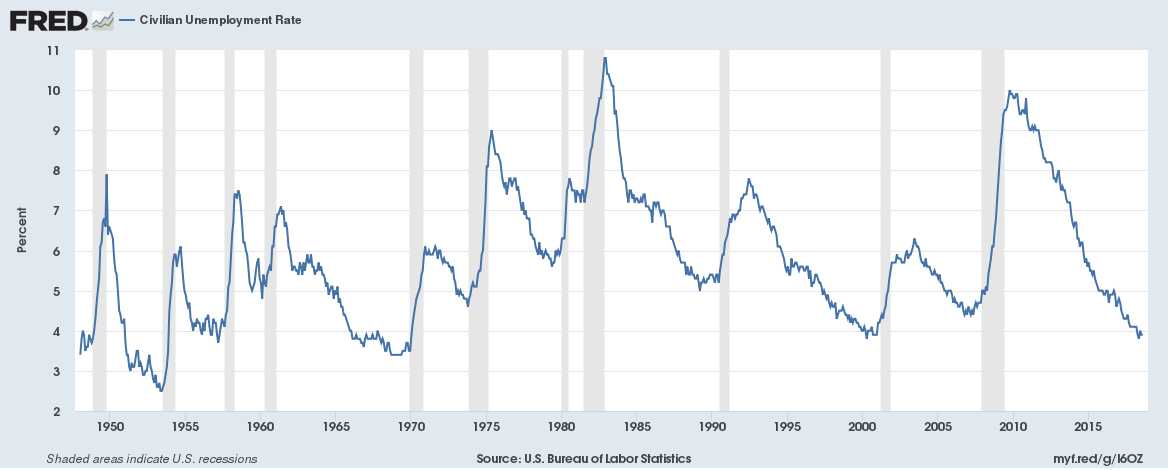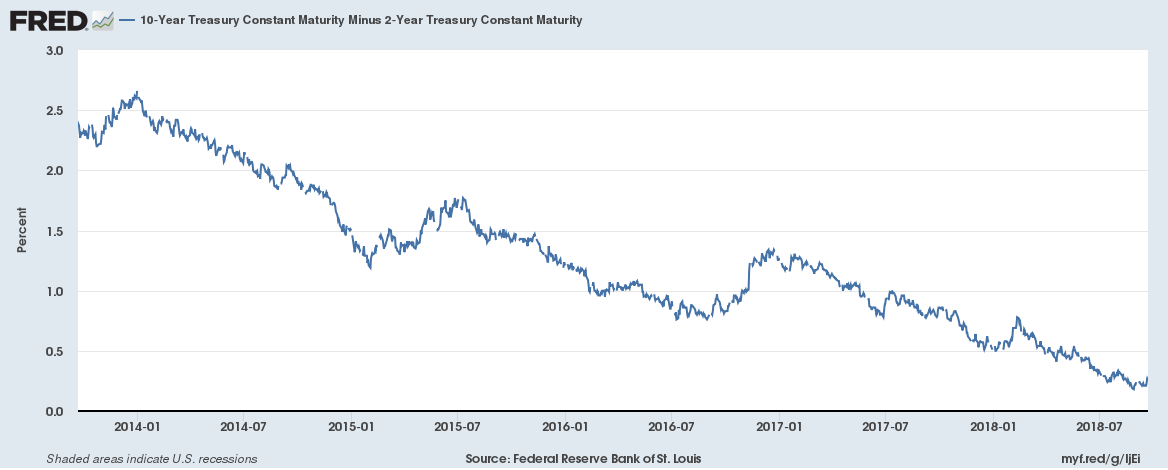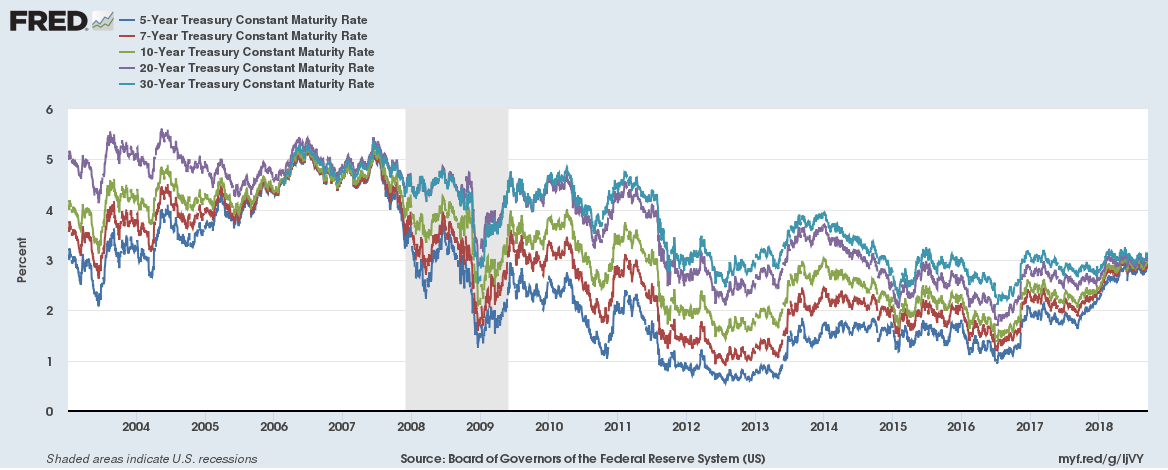We wrote about three slightly different U.S. recession indicators that have been predictive of the past few recessions and have been tracking how near or far are those from being invoked, here’s where we are in September 2018,
Unemployment rate
The US Bureau of Labor Statistics data reveals that the US unemployment rate has a hit a new multi-year low four to eight months before the start of every recession since the 1940s. In other words, the economy hits full employment four to eight months before the start of a recession.
The unemployment rate goes up at least 1% and then doesn’t go back down without a recession occurring.
The current U.S. unemployment rate is 3.9% (Related: The U.S. unemployment rate is at an 18-year low but only because the labor force participation rate is close to a 40-year low) and U.S. employers added around 201,000 jobs in August, any number lower than 126,000 would see the unemployment rate rise. We believe we are sometime away from this happening.

Yield curve inversion
The US 10-year Treasury constant maturity yield minus the 2-year Treasury constant maturity yield spread has been a good indicator of past recessions. Yield curve inversion which happens when the spread turns negative and has preceded the last seven straight recessions. Currently the difference just 26 bps.


Treasury yield curve convergence
And the 30-year, 20-year and 10-year Treasury yields have almost converged three to six months before each of the past four recessions as well.
Yields as of the 21st of September were,
2-year 2.81%
3-year 2.89%
5-year 2.96%
7-year 3.03%
10-year 3.07%
20-year 3.15%
30-year 3.21%


Just going by these indicators, a U.S. recession is at least 10 months away.